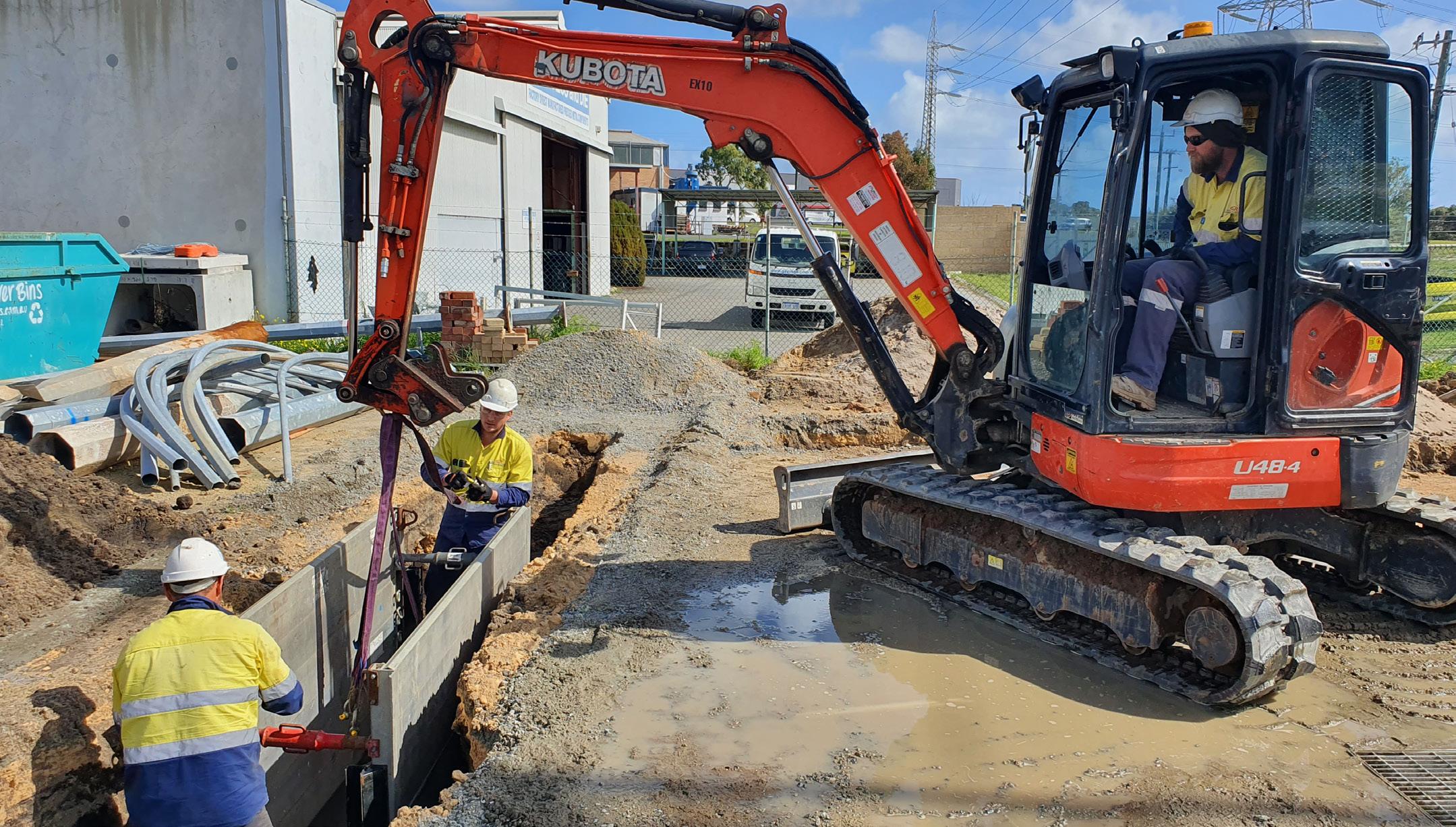
2 minute read
WORK SAFETY IN TRENCHES, TUNNELS, AND SHAFTS
Written by Karyn Grant, Civil Train WA
In the civil construction industry, the type of the work carried out in trenches, tunnels and shafts is arguably one of the most dangerous. It exposes the workers to the risk of injuries, even deaths. Despite advancements in trench support systems, incidents and accidents still occur, emphasising the need for a comprehensive approach to safety. Hence, it is important to address the primary factors contributing to these unfortunate occurrences, and establish essential guidelines, to ensure the safety of construction workers.
Causes Of Trench Collapses And Fatalities
A comprehensive study involving research and interviews, conducted by CPWR (The Center for Construction Research and Training) in the US, has identified key factors that contribute to trench collapses and fatalities.
• Faulty risk perception
This happens when workers underestimate the danger or overestimate the time it takes for a collapse to occur.
• Time and
Economic Pressures
These twin pressures are associated with completing projects quickly and cheaply. Contractors often prioritise speed over safety, leading to inadequate protection measures. Economic pressures, such as cost-cutting and insufficient funding for essential supplies, can exacerbate the risk of trench collapses.
• Ignoring safety instructions
Workers may choose to disregard safety instructions from their supervisors without considering the risks. This seems to happen more often with the older workers who prefer to rely solely on past experiences instead of taking advice from their younger supervisors they consider as less knowledgeable. The outcomes of such careless behaviour could be dire.
Reducing Fatalities
Based on the research findings, it is suggested these workplaces consider implementing stricter enforcement and criminal prosecutions of offenders, along with enhancing training programs and ensuring the consistent employment of welltrained competent workers. It is also recommended to address repeat violators through a ‘three strikes and you're out’ rule, with a particular focus on high-risk firms. Improving training and outreach efforts should also be prioritised. Furthermore, making shoring/shielding a mandatory part of bid documents and exploring innovative techniques can also contribute to reducing fatalities.
Implementing Safety Measures
Various key safety measures can be employed to minimise risks in trench work.
• Bench excavation
It involves creating a series of steps, ensuring each step is no deeper than 1.5 metres, thus creating setbacks between levels. This design prevents the upper level from directly collapsing into the bottom of the trench, providing protection against burial in case of a collapse.
• Battering
Similar to benching, it involves sloping the excavation walls at the angle of repose. This selfsupporting trench wall reduces the risk of collapse without the need for additional shoring measures.
• Combining benching and battering
This combination can be an effective strategy so long as the depth of each level of the trench does not exceed 1.5 metres.

• Shoring
A robust method, it prevents trench collapses by utilising shoring boxes, shields, or sheet piling to support the trench walls. The use of spacers or hydraulic systems evenly distributes pressure, maintaining the integrity of the walls. Shoring is particularly crucial in limited space situations and requires trained workers and qualified supervisors for proper installation.
The Importance Of Comprehensive Training
In conjunction with implementing the above safety measures, comprehensive training programs are crucial to equip workers with the necessary skills and knowledge to ensure their work safety. Civil Train offers a nationally accredited unit on installing trench support. Through hands-on learning and assessment, course participants can gain proficiency in installing shoring and implementing site-specific safety practices. To find out more about a training course near you, go to: www.civiltrain.com.au
Safety Outcomes
Combined with strict enforcement and continuous improvement of policies, the safety of construction workers in the challenging environment of civil construction can be secured. And by adhering to best practices, we can reduce the number of accidents and fatalities associated with trench and excavation works.










